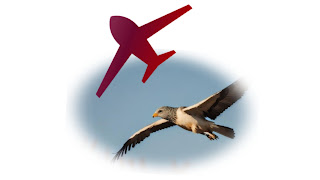Nature inspires us in many ways. Look at the flying bird, and try to think how its wings and the shape of its body enable it to fly. Look at the airplane when flies in the sky it's an inspiration design from nature that works wonders.
Nature doesn't limit our thinking, but it expands it beyond what we can imagine as impossible until when it's possible. Humans have managed to design a lot of things just by simply being inspired by nature.
Many fields of knowledge apply the wisdom of nature to design, innovate and improve human life in many ways. From healthcare, energy, and environment to innovation. Developing a more sustainable world comes with the aid of nature's wisdom to inspire safer technology for healthier lifestyles, cleaner energy, and eco-literacy.
- By mimicking the natural design of the human brain. Humans have managed to develop and are trying to improve artificial intelligence(AI) to the human capacity. Fine branching structure at the end of a nerve fiber has inspired the development of an artificial peripheral nervous system with sensitivity enough closer to that of the actual peripheral nervous system this helps deep learning in artificial intelligence to improve healthcare.
- Technology has impacted the fields of space science and learning. Mimicking the biological function of nature enables scientists to put them into technical applications for space exploration. For example, a Venus Flytrap and its bi-stale mechanism to capture its prey can be used to design and build a robot that can help to remove debris from space.
- Insects such as bees and termites inspire humans to design the systems that keep our homes warm and free from germs. These insects produce natural anti-bacterial and can design and build structures with a precision that withstand the taste of nature.
Termite mounds and honeycombs are among the most sophisticated structures and works of architecture in the natural world.
- Adding to that, the leaves of plants do not get wet due to having super hydrophobic properties. Scientists are trying to learn from these leaves how to produce clothes which can not get wet from the rain. A study on the material property of lotus( Nelumbo nucifera) plant leaves has an interesting industrial solution to the innovation of paint for self-cleaning surfaces.
- Also, not forgetting the Velcro invention, the most famous technology inspired by plants. In 1948, George de Mestral discovered how the hooks of plants burrs (Arctium lappa) stuck in the fur of his dog. He then expanded the idea into a wonderful and useful zip fastener.
- Look at the weaver bird, and see how it builds its nest with quality, beauty, and yet inspiring skills. By observing when it's done and how it's done by the wonders of nature we are inspired to learn even more to improve our ideas and live a better life. In-depth learning from nature to understand its fundamental principles brings precision to solving our difficult problems with ease.
Humanity has been in search of inspiration from nature since the dawn of time. Natural patterns in the sky, weather, and climatic movements of life from season to season have been the true guidance from time to time.
Ancient people observed nature to identify key signals vital to their survival. They took what they needed from nature. Contrary to what the ancient people did, our generation lusts for more without paying back to nature. Now we are here at a critical time when nature decides to react against the human mismanagement of its resources.
By mimicking nature we have been able to do things that were impossible before. We can eradicate diseases that are a problem for man kinds for a long time. So, the most advanced ideas in technology are nature's inspiration, deeply rooted in the natural world.
From wisdom to opening our minds, whenever we need a teacher to teach us the raw facts of life and the natural laws of life, nature gives us a hand to guide us through the entire process.
References
Xiao, X., Xiao, X., Lan, Y., & Chen, J. (2021). Learning from nature for healthcare, energy, and the environment. Innovation (Cambridge (Mass.)), 2(3), 100135. https://doi.org/10.1016/j.xinn.2021.100135
Sebastian Oberst, Joseph C.S. Lai, Richard Martin, Benjamin J. Halkon, Mohammad Saadatfar, Theodore A. Evans. Revisiting stigmergy in light of multi-functional, biogenic, termite structures as communication channels. Computational and Structural Biotechnology Journal, Volume 18, 2020, Pages 2522-2534, ISSN 2001-0370,
https://doi.org/10.1016/j.csbj.2020.08.012.
Banken, E., Schneider, V.E., Ben-Larbi, M.K., et al. Biomimetic space debris removal: conceptual design of bio-inspired active debris removal scenarios. CEAS Space J 15, 237–252 (2023). https://doi.org/10.1007/s12567-022-00438-z
Mazzolai, B., Beccai, L., & Mattoli, V. (2014). Plants as a model in biomimetics and robotics: new perspectives. Frontiers in bioengineering and biotechnology, 2, 2. https://doi.org/10.3389/fbioe.2014.00002





Thank you for reading!